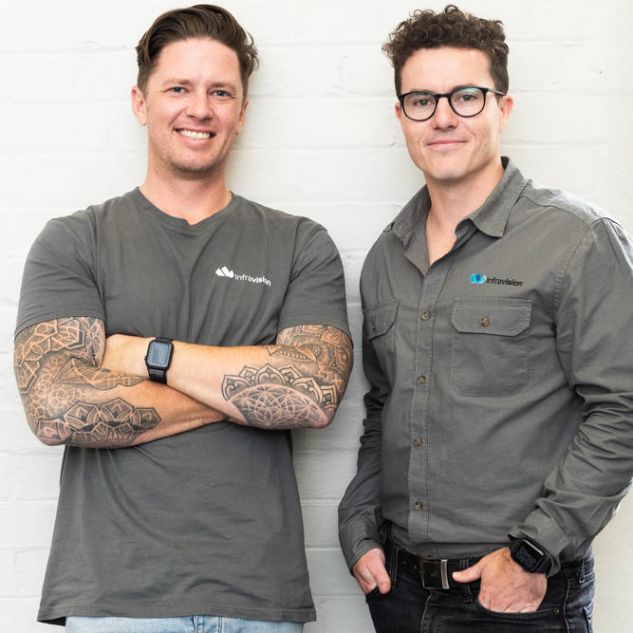
Written By
Bianca de Loryn
College/Division
College of Science and Engineering
Publish Date
24 February 2021
Related Study Areas
Heavy drones doing the hard work
JCU alumni Cameron Van Der Berg uses drones to connect wind and solar power stations to the electricity grid. Instead of cutting trees to make way for dangerous jobs done by large helicopters, oversized drones do the hard work now.
Working with drones in challenging territory
Working with drones can be breathtaking, especially when it comes to stringing power lines in challenging terrain, such as the Burrinjuck Hydro power station in the mountains near Canberra. “There was a 1-kilometre span of power line that we had to complete. We had to take the hydropower station out off the grid, and then let the drones perform the work in a one-hour window,” JCU alumni Cameron Van Der Berg says. “It was a one-hour window to string one kilometre from end to end, in very, very steep terrain.”
Cameron Van Der Berg, who studied mechanical engineering, and his business partner Chris Cox, an ex-Air Force pilot, master these challenges on a daily basis. When they founded their company Infravision in 2017, they were still based at JCU Townsville. “The JCU City campus would be our team meeting space, initially, before we had our own office and before we had any team members,” Cameron says .
How to string power lines while protecting people and the environment
At that time, Cameron and Chris realised the extent of the problem, but they didn’t have a solution. “Traditionally, forest needs to be cleared by using bulldozers, and the power line wires will be pulled out by tractor,” Cameron says. “Or they use helicopters to pull the wire. Pulling these wires by helicopter is very dangerous, because we would need to work very low to the ground and close to the power lines and the infrastructure.” Another problem was that the whole process wasn’t only harmful for the environment, it was also expensive to carry out.


Drones help solve an engineering challenge
Letting heavy drones do the work wasn’t an idea that came up immediately, Cameron says. “I actually had no interest in drones in particular, but I'm an engineer, and I was looking for a way to improve that process. Solving the problem in the industry is actually what led to the drones.”
Since Cameron didn’t have any experience with drones, he looked around for experts in the field. “I teamed up with two ex-Australian Air Force pilots. At the Air Force, they were in charge of unmanned aircraft and manned aircraft,” Cameron says. “They helped me take on the complicated large drone industry and bring the solution to life.”
.
Heavy drones doing hard work
The power line stringing system is carried out by drones that weigh around 130 to 140 kilograms each, and the drones can carry around 75 kilos each, which is more than the weight of an average sized man . The drones are all battery powered, which can be a challenge. “Until it’s empty, a battery lasts for 40 minutes. But when it's pulling a power line, the battery will only last about 20 minutes.”
Cameron says that using battery powered drones was a conscious decision. “We had options to look at turbine or petrol aircrafts, but we decided that we wanted to keep the product all electric.” The remaining equipment, that is the power line tensioners and the winches, are battery powered, too. “We have invented an all-electric solution for this, which we’re really stoked about,” Cameron says.
Drones making a difference in bushfire affected areas
In 2020, the year started off with a major challenge for Cameron’s company, which is now based in Sydney. When the bushfires went through New South Wales, a lot of high voltage power lines went down.
“The Snowy Hydro generation facility makes up a large part of the state of New South Wales energy supply,” Cameron says. “We went into the bushfire regions to repair the high voltage transmission lines after the fires, and we used our drone systems to perform that work. That was a great project.”
Bringing power to remote Papua New Guinea
Another highlight of 2020 was a collaboration between Infravision and Papua New Guinea Power. “We provided an unmanned aircraft capability to Papua New Guinea Power. We’re training their workforce to adopt unmanned aircraft,” Cameron says.
“Their really mountainous terrain is hard to access. Instead of getting large equipment into very hard to access areas, they carry the drones in their four-wheel drives vehicles.”
A green future powered by an Australian drone team
A major focus for Cameron and his team in 2021 is to help Australians access renewable power sources. “We’re busier than we’ve ever been. We’re focused on connecting new solar and wind farms to the grid,” Cameron says. “We have a hiring phase coming up, and we are focused on growing the business into a much larger organisation that can have a greater impact on the transition to renewable energy.”
Learning to become a confident problem-solver
In regard to his undergrad years as a mechanical engineering student at JCU Townsville, Cameron says that the decision to study engineering was the best decision he’s ever made. “Graduating as an engineer has helped me succeed at what I'm doing, running our own company, a technology company,” Cameron says. “Without that I wouldn't be where I am, having the confidence to invent and build new solutions for the energy industry. I don't think I would be there without an engineering background.”